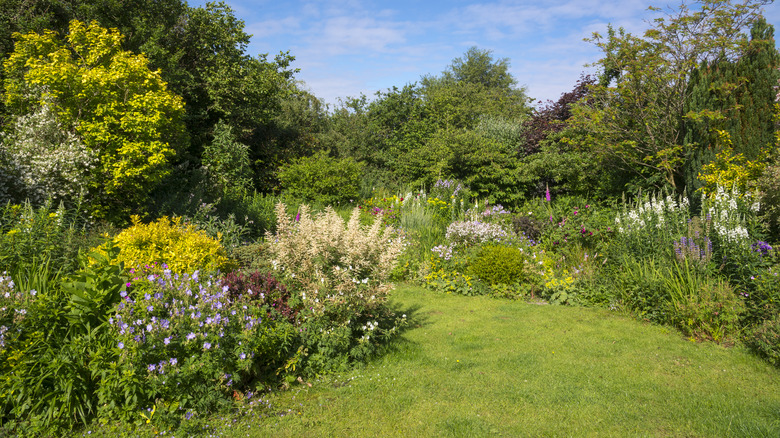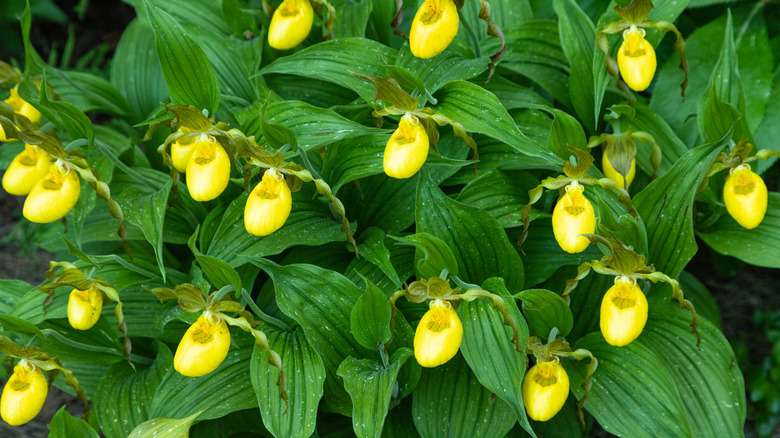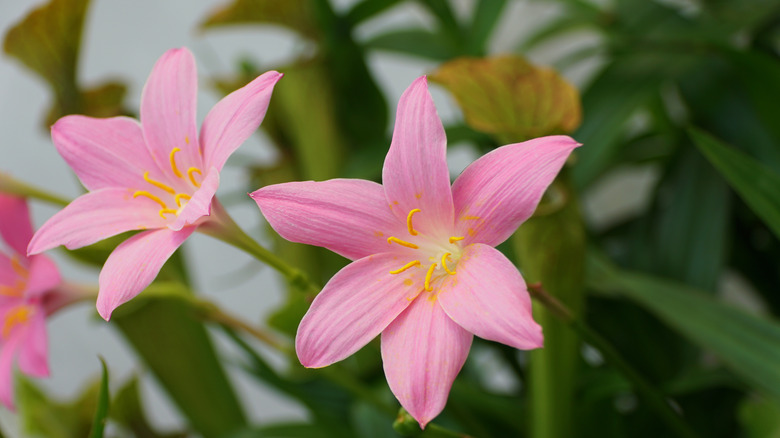Rare Wild Orchid Varieties To Give Your Garden Landscape A Unique Flare
When you think of orchids, your first thought may be houseplants. While these beautiful flowers can make excellent additions to your home, many species can also thrive outside in gardens, even in relatively cold regions. Despite their tropical appearance, there are many orchid species native to North America, including some that flourish in areas as cold as USDA Zone 3, where they can add a unique and elegant edge to landscapes and attract bees and other native pollinators. While gardeners in cooler zones may want to add native yellow lady's slipper orchids (Cypripedium parviflorum) or rose pogonia orchids (Pogonia ophioglossoides) to their gardens, growers in warmer climates should consider species including water spider orchids (Habenaria repens) and Florida butterfly orchids (Encyclia tampensis) when adding native orchids to their spaces.
Orchid doesn't refer to a species or even a genus of plants but to an entire diverse family that consists of over 17,000 different species. Most tropical orchids don't grow in soil but are epiphytes, which means they grow on other plants, although they aren't actually parasites. Orchids from temperate zones, however, are more likely to grow naturally in soils. Considering the amount of variety within the orchid family, it's important to know your specific orchid's needs before planting.
Orchids for cool climate gardens
Native to the United States and Canada, yellow lady's slipper orchids can often be seen in the wild, especially in pine and oak forests. These acid-loving plants can also be right at home in your yard as long as you give them plenty of moist and well-draining, compost-heavy soil. Thriving in part shade, they're hardy in USDA Zones 3 through 8, and most don't grow much taller than 2 feet, making them ideal additions to many woodland gardens. While they are not always available at garden centers, they can easily be purchased from specialty stores.
Rose pogonia orchids are also native to the Eastern US and Canada and thrive in moist soil. While they rarely grow taller than about a foot in height, their distinctive flowers more than compensate for this. Similar to yellow lady's slippers, they are hardy in USDA Zones 3 through 8 and can often be found in specialty plant shops, but unlike lady's slippers, rose pogonia orchids enjoy full sun and sandy soil.
Warm climate orchids
Growers in warm climates don't have to miss out on growing native orchids either, as the water spider orchid, an aquatic orchid, is native to the southern United States and is hardy in USDA Zones 8 through 10. Thriving in full-sun locations in acidic bogs, this distinctive plant is ideal to keep in your pond. You can even incorporate a mini-water garden to transform your backyard and create a perfect home for these unique plants. Just be sure to purchase them from a reputable seller because poaching is a serious problem with this species.
For shadier and drier locations, the Florida butterfly orchid can be a fascinating addition. Hardy in USDA Zones 8 through 11, butterfly orchids, unlike many temperate zone orchids, are epiphytes and grow best if they have a tree or piece of cork to grow on. Butterfly orchids thrive in high humidity and appreciate biweekly doses of diluted fertilizer. Because they are a protected species, be sure to purchase from a reputable seller who does not harvest them from the wild.


